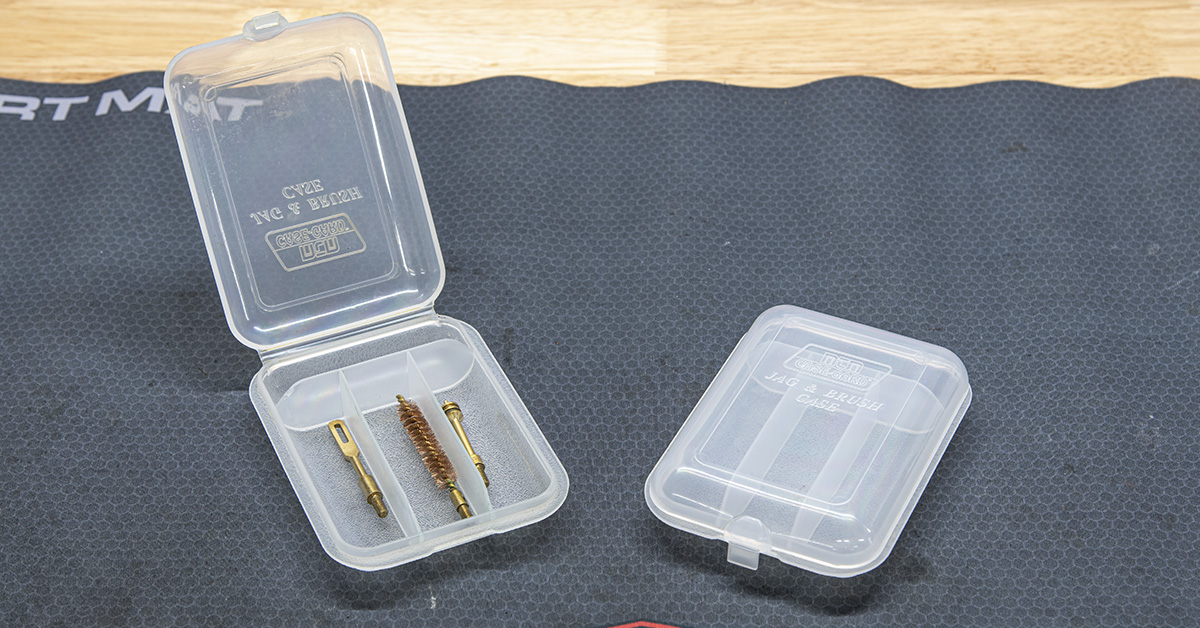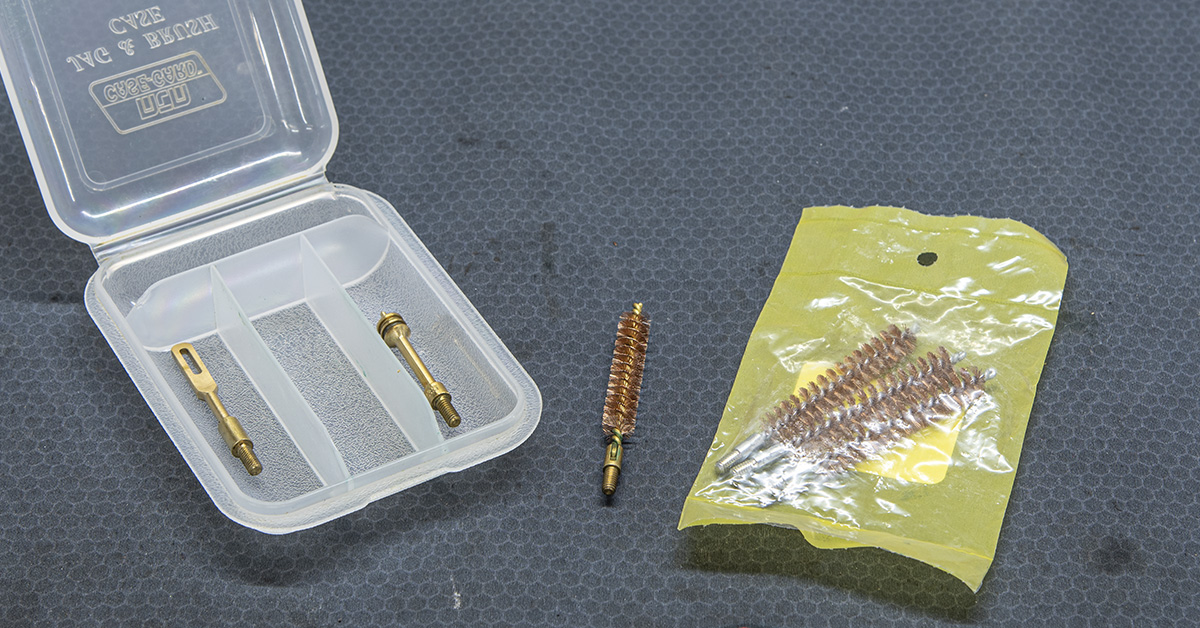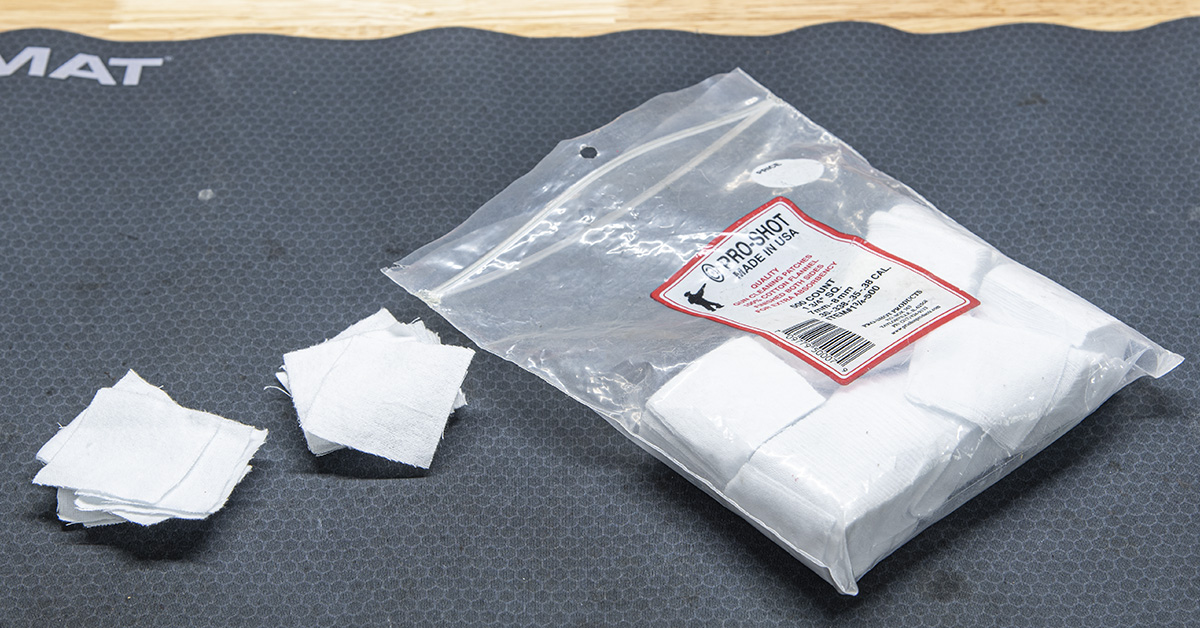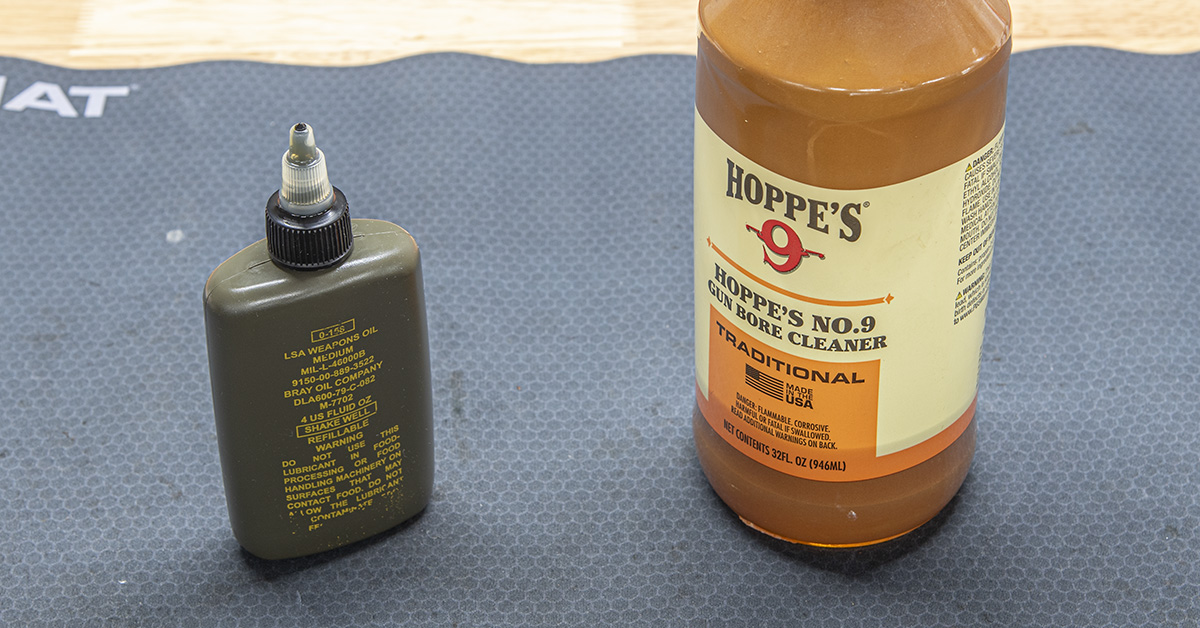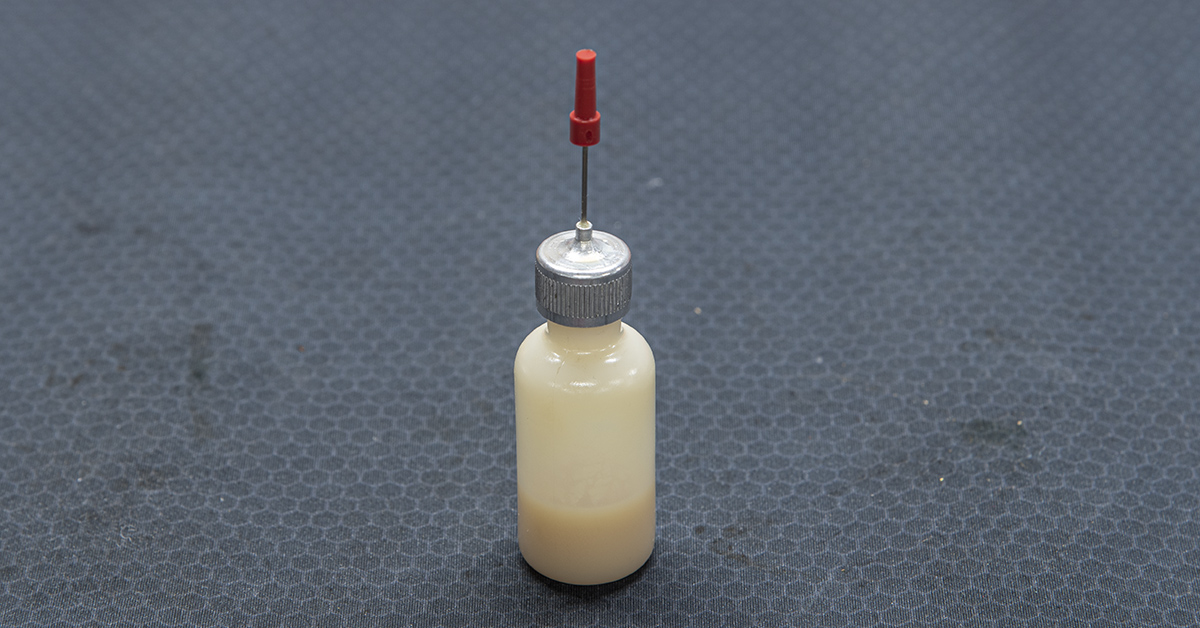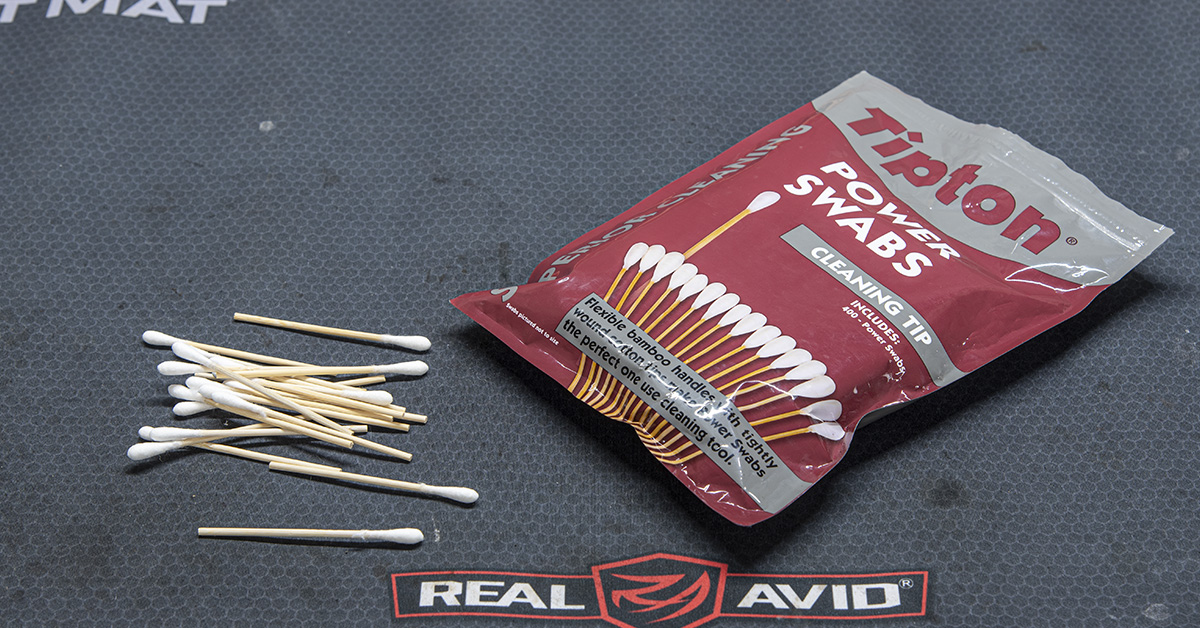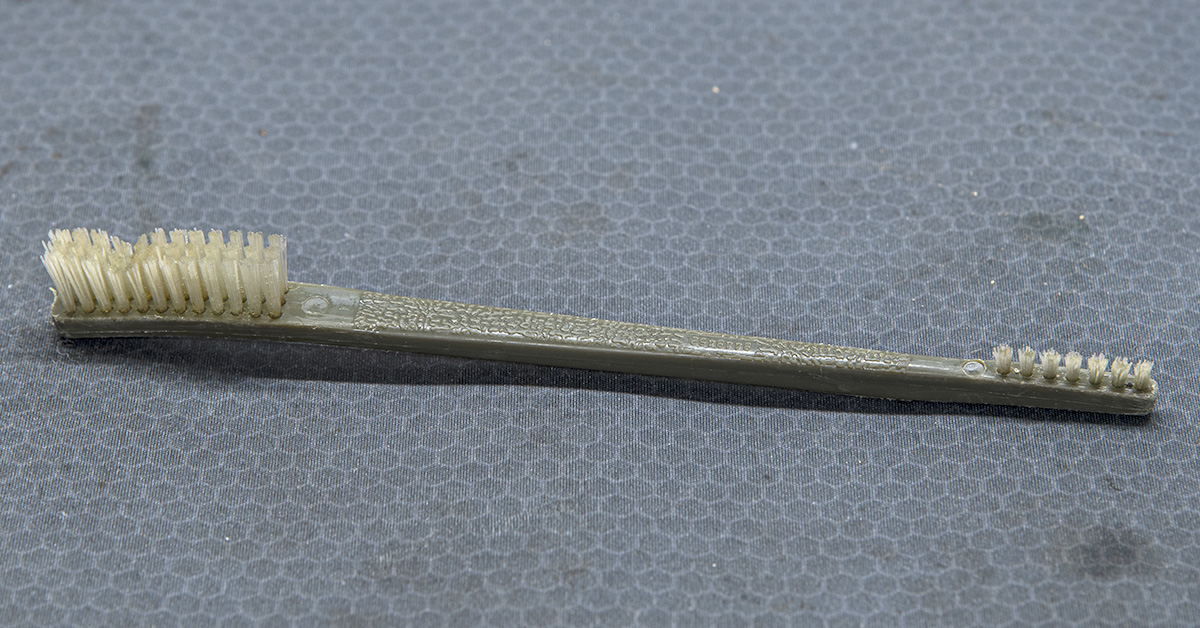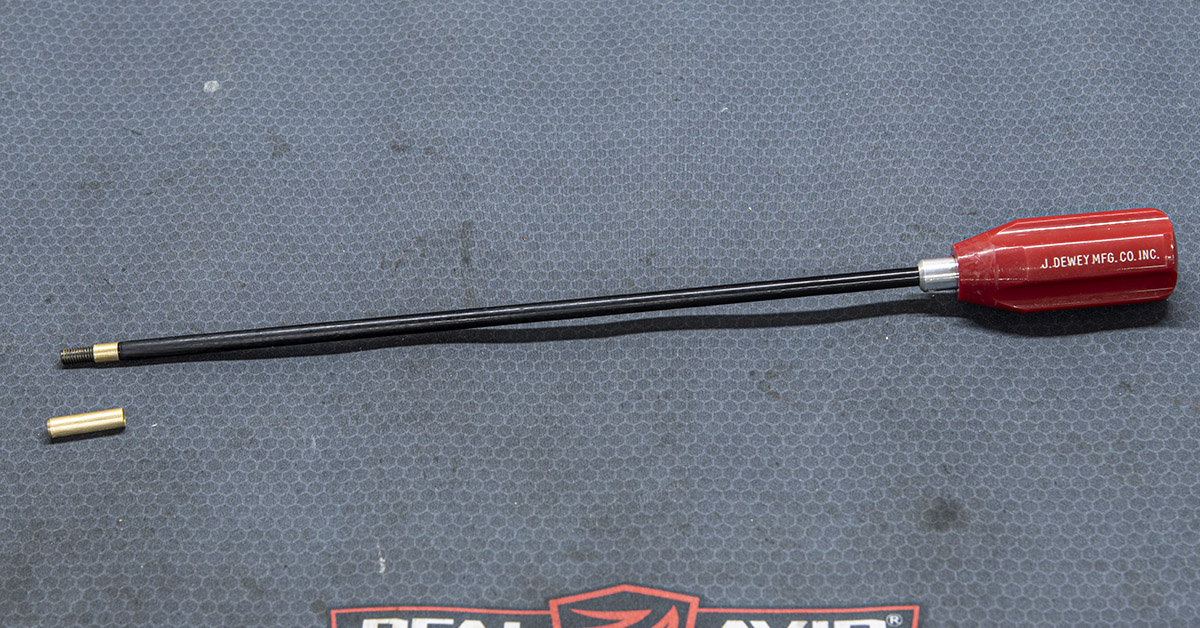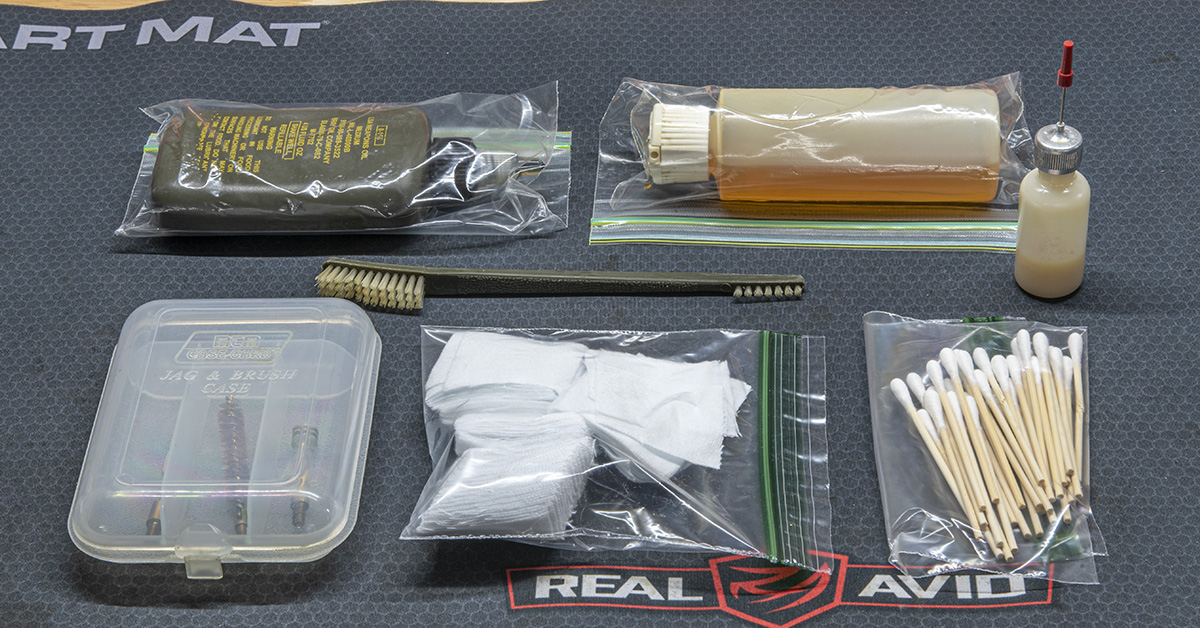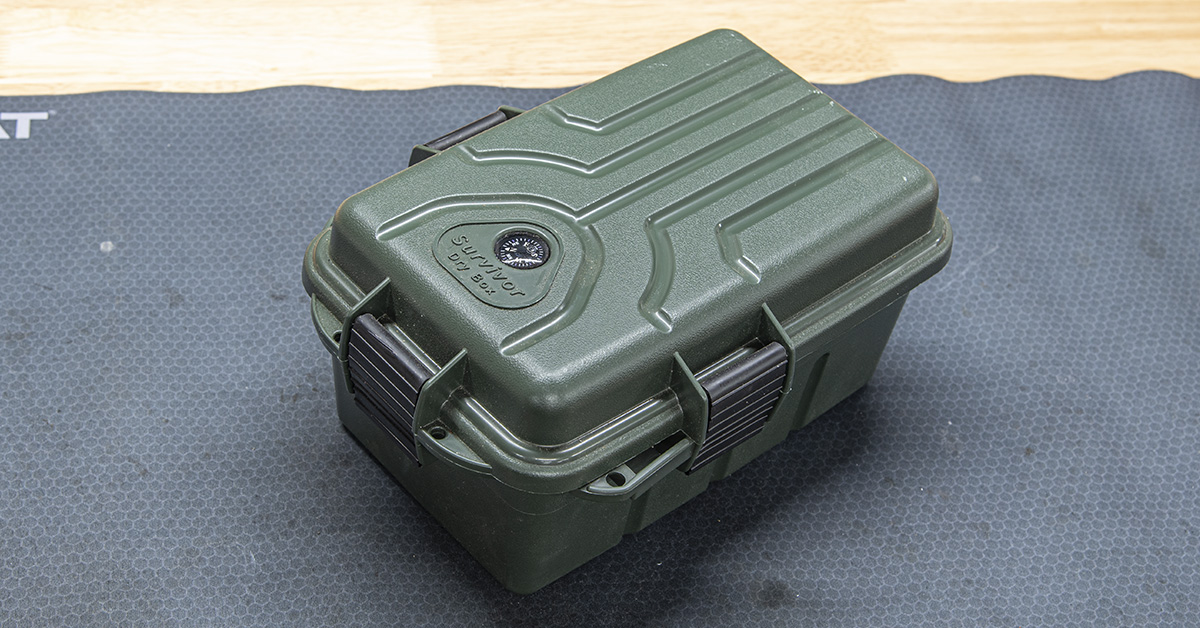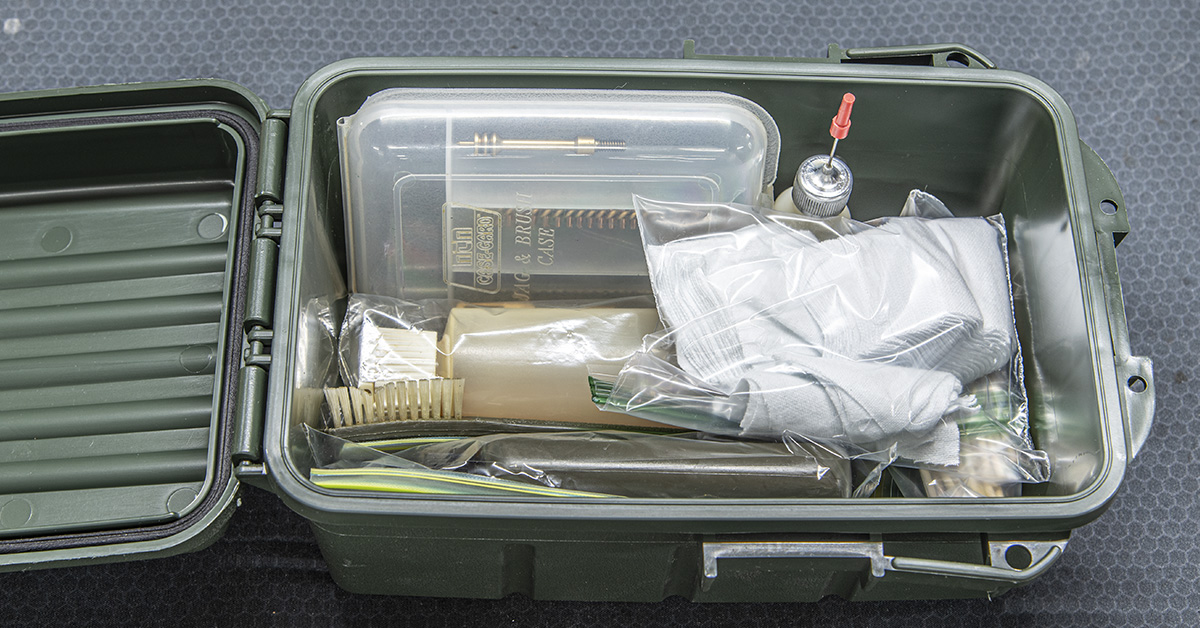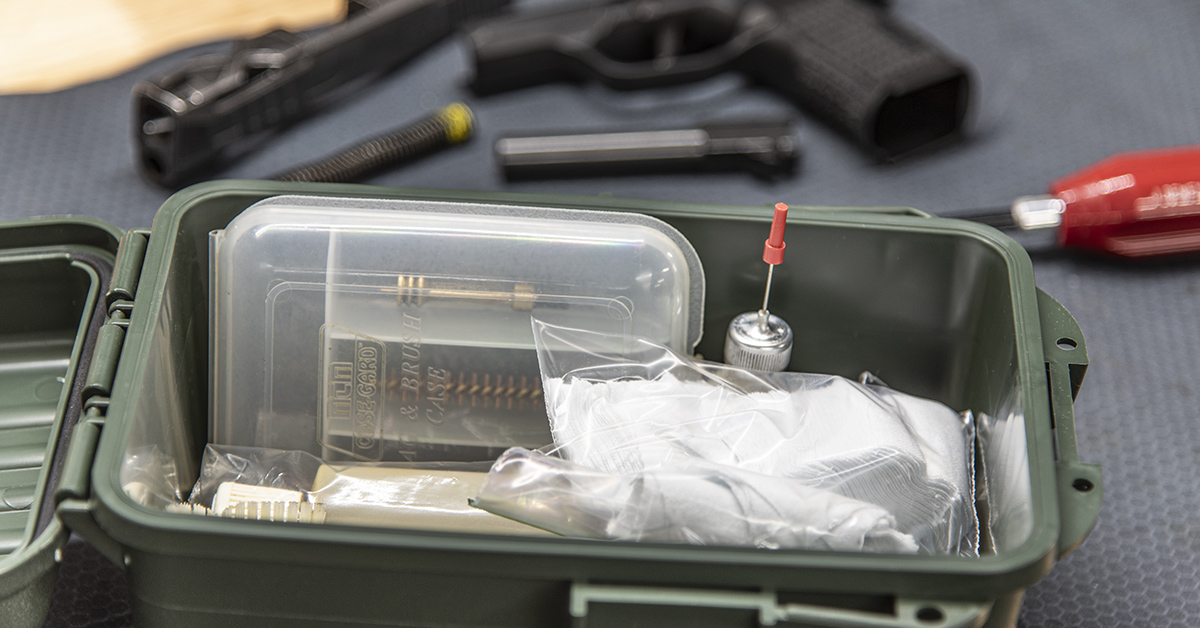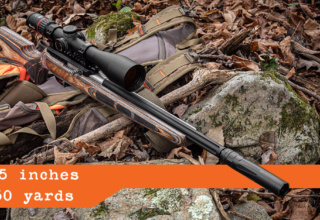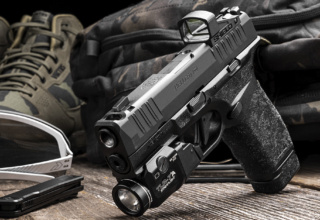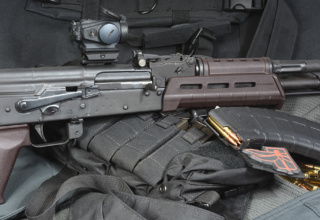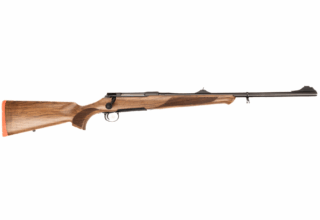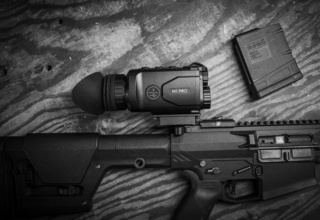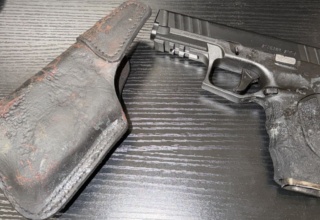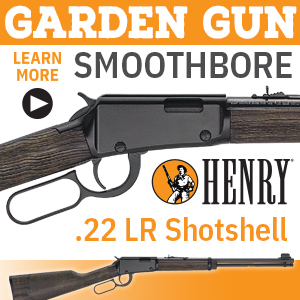A well-stocked and customized cleaning kit will eliminate (almost!) the hassle of gun maintenance and ensure your handgun runs at peak performance when you need it
by Rob Reaser
Gun cleaning.
Yeah, no one gets a big thrill out of doing it, but it must be done to keep your pistol running reliably and to prevent the rust and corrosion that inevitably follows a day at the range. Most Shoot ON readers understand this and are quick to clean their guns after every shooting session. Not everyone, though, realizes that the personal defense gun you carry every day, even though it has not been fired, must be tended to on a regular basis. Dust, lint, sweat, and rapid exposure to changing environments can also degrade a handgun’s performance, making it wise for the concealed carry practitioner to set up a routine cleaning schedule.
The biggest reason many gun owners are, shall we say, lax in their firearm maintenance duties is the hassle of rounding up all the essential tools and materials needed to get the job done. I have family members (who shall remain anonymous to protect the guilty) who “have cleaning stuff somewhere” but don’t keep all their supplies in a central location and more often than not don’t even have the most basic materials required.
One of the keys to keeping your handgun operational is maintaining a comprehensive cleaning kit — a kit that has everything you need at your fingertips. While this is basic to most of our readers, beginners and infrequent shooters would do well to take a moment and a few dollars to put together a kit that is always handy and stocked with the essential tools and supplies. Here, we’ll run through the basic ingredients of a pistol cleaning kit and give you a few tips that will help simplify your firearm maintenance routine.
Three rod accessories are typically used for barrel bore cleaning: patch loop, bore brush, and jag. I consider the patch loop to be pretty much worthless for serious bore cleaning of anything other than a shotgun, so I never use them. But, to each his own. Bore brushes and jags, on the other hand, are must-haves. The bronze bore brush, used in conjunction with a quality solvent, will scrub fowling from the rifling while the jag, tipped with a cleaning patch, will sweep up the mess left behind. All these rod accessories are caliber-specific, so you will want to buy those designated for your pistol caliber.
Where many people stumble is in keeping their rod accessories organized and not losing them. For this, I use the MTM Case-Gard Jag & Brush Case. These handy little boxes have four compartments that keep your rod accessories consolidated and difficult to lose. I maintain a box for each of my most frequently used handgun and rifle calibers.
While brass rod tip accessories like jags and patch loops are long-lived, the same can’t be said for bore brushes. They begin to wear down after a few uses and eventually will reduce in diameter to the point that they can’t effectively scrub the barrel bore. The smart approach is to buy multi-packs of the bore brushes you most commonly use and remember to replenish your stock before you run out.
The same “buy more now so you don’t regret it later” approach applies to cleaning patches. First, premium cotton patches are the way to go. I find the synthetic patches to be insufficiently absorbent and too “slick” to effectively capture small particles and residue left in the bore. Second, a thorough bore cleaning is going to set you back a handful of cleaning patches. Since you’ll run through them fairly quickly for each cleaning session, it is most cost-effective to buy them in quantity. And like the cleaning rod accessories, cleaning patches are specific to a range of calibers, so pick the patches (square or round) that the patch manufacturer recommends for a specific caliber.
The only lubricant most pistols and revolvers require is a light gun oil. There are scads of varieties on the market and most perform to expectations. An in-the-know gunsmith friend of mine pointed me to LSA Weapons Oil several years ago, and that is what I use exclusively for all non-grease lubrication needs. I also like that these come in small squeeze bottles, making them easy to stow in a range or field kit.
For solvent, I can’t find fault with Hoppe’s No. 9. Again, purchase a large bottle, like this 32-oz. version, and you’ll have plenty on hand. I transfer a small quantity of Hoppe’s from the big bottle into smaller squeeze bottles for work on the gun bench or in a field kit.
Similarly, I transfer a quantity of LSA Weapons Oil into small needle oilers. This is ideal for placing oil into tight or hard-to-reach areas of a pistol. I use this applicator to place oil on a striker-fired pistol’s connector and along the slide’s rails. The applicator allows for precise lubrication and prevents the lube from getting into areas where you don’t want it.
Speaking of slide rails, these areas can be challenging to clean because the channels are so narrow. Here, cotton swabs come to the rescue. Those swabs made for gun cleaning, such as Tipton Power Swabs, do a great job of lifting crud from tight corners and grooves, and their wooden construction makes them stronger and more efficient than standard Q-tips.
Another must-have for deep-cleaning your handgun is a KleenBore double-end nylon bristle brush. The nylon bristles will provide the necessary scrubbing power without damaging your gun’s finish. Use the large end for fast work on the gun’s externals and the small end for cleaning breech faces and slide grooves.
The last gotta-have tool is a good pistol cleaning rod. Get a rod sized for handgun work (don’t repurpose your rifle cleaning rod) and make sure it has a rotating (ball bearing) handle. My preference is a J Dewey nylon-coated rod. The nylon coating protects the bore from damage and the smooth, rotating handle allows the cleaning brush and patched jag to follow the rifling for optimal cleaning.
The preceding supplies and tools comprise the essentials of a properly outfitted cleaning kit. My recommendation is to have one kit set up for each caliber handgun you have. That way, you will never find yourself hunting for equipment when transitioning from one gun servicing to the next. The pistol cleaning rod, of course, can be used across multiple handgun calibers, although calibers below .30 will require a smaller-diameter rod.
Once the tools and supplies are assembled, the intention is to store the complete kit in a convenient, easily accessible manner. This means stowing the solvent and lubricant in storage baggies to prevent accidental leaks and doing the same with your cotton patches and swabs.
To keep each caliber cleaning kit as a unit, you’ll find no better solution than the Survivor Dry Box from MTM Case-Gard. Sure, cleaning kit storage isn’t what the folks at MTM made this box for, but it is durable, O-ring sealed for water resistance, and it has a compass in the lid in case you need to find your way back from the shooting range (just kidding!).
With all my oil, solvent, patches, and cleaning swabs packaged and condensed into smaller-than-bulk quantities, I can fit an entire caliber-specific cleaning kit into one easy to stow, easy to access, and easy to transport unit, minus the cleaning rod.
Going through this kit-building process for each pistol caliber family might seem excessive to some (and for the well-organized, faithful pistol cleaning gun owner it would be), but for most folks who tend to put off firearm maintenance — in part because rounding up all the necessary materials and keeping track of them is not their strong suit — a dedicated cleaning kit like this will pay dividends in the long run (not to mention ensuring your gun will perform as expected when you need it most).

